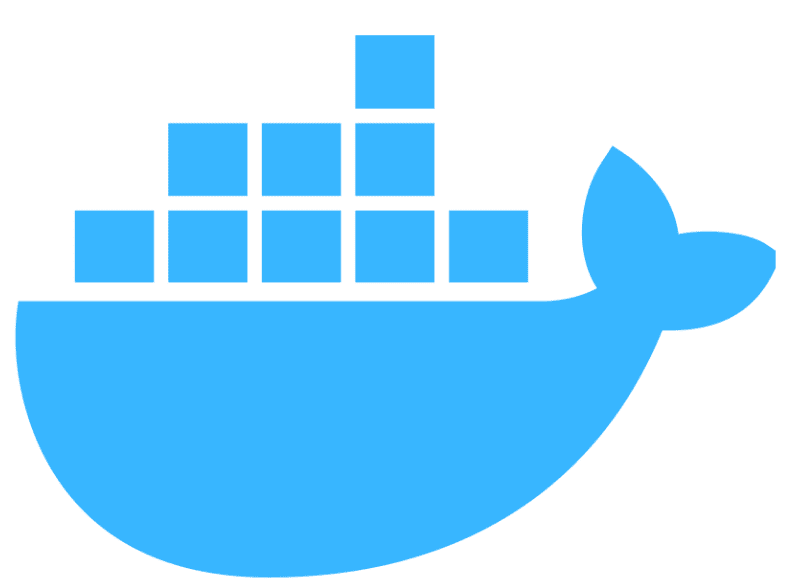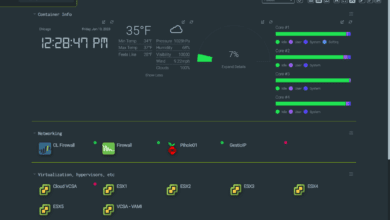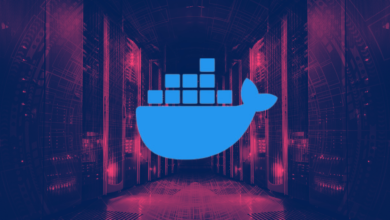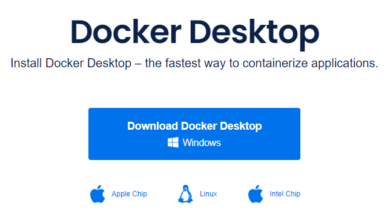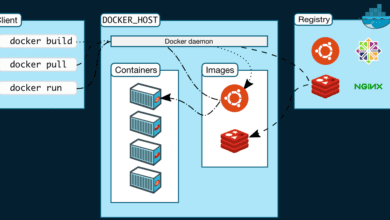Why 2024 is the Real Year of Container vs VM
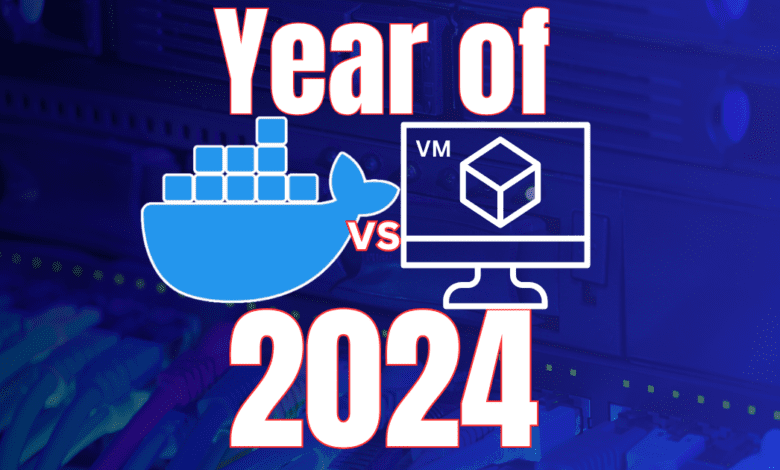
Wow, who could have foretold what was in store for 2024 with all the changes and shocking tectonic shifts that have happened over the course of the last few months. We have certainly had several good discussions and blog posts covering the topic of containers vs virtual machines and which is best and the use cases for both. However, I think it is time to have another discussion on this subject with the context of everything going on right now. Let’s dive into why 2024 will definitely be the year of container vs VM!
Table of contents
- 1. Tectonic shifts in virtualization
- 2. Virtual machines will become less relevant
- 3. Container Technology is accelerating
- 4. Cloud control planes
- 5. Full desktops no longer require full virtual machines
- 6. The rise of AI
- Container vs VM in 2024: Features and considerations
- Wrapping up container vs VM in 2024
1. Tectonic shifts in virtualization
You would have had to have been on a different planet to not have heard and felt the ripples across the industry with the close of the Broadcom purchase of VMware. I have never seen such massive changes that affects more organizations in the SMB and enterprise market than the VMware purchase by Broadcom and the sweeping changes they have quickly made.
They have pruned down the VMware catalog from dozens of SKUs of perpetual products to just 2 solutions: VMware Cloud Foundation (VCF) and VMware vSphere Foundation (VVF). In addition, pricing for most organizations is set to drastically increase.
I have seen so many posts on twitter of ones involved with subscription renewels seeing 5-10x the cost previously. Broadcom has also upset many managed service providers (MSPs) and partners with sweeping changes to its partner programs and new barriers to entry to qualify to be an official partner.
Take a look at my blog post on the VMware by Broadcom lesson here: VMware by Broadcom Lesson: Don’t base your career on a product.
With so many snubbed or burned by the massive sting of VMware changes, organizations everywhere are reassessing where things are, what solutions they are using, and which technologies they need moving forward.
Historically, they have relied on hypervisors, like VMware or Hyper-V, running on the physical machine to provide the host operating system for running these virtualized environments. These hypervisors abstract the underlying physical hardware from the guest operating system.
2. Virtual machines will become less relevant
Like the pandemic drastically accelerated the move to hybrid cloud productivity, communication, and collaboration tools, the fallout from the VMware buyout I think is going to accelerate the move to a more modern infrastructure architecture.
I think as time moves along in conjunction with the changes we have seen at the vendor level with VMware being the major player running millions of virtual machine workloads, organizations are going to reevaluate their estate and start making their plans to accelerate the move to more modern infrastructure using containers.
With cloud now becoming more attractive than ever before with less incentives (cost wise due to recent price increases for licensing) to stay on-premises, organizations will refactor where they can and host much smaller estates on-premises as these are phased out.
While this shift was already happening, again, like the pandemic was for hybrid productivity, the changing on-premises landscape and increased pricing will be a catalyst for this acceleration.
We all know that the underlying VMs are important to containers. These won’t go away, but the focus will accelerate away from the “pet” VMs, to the “cattle” container hosts, even in the smaller enterprise and SMB environments. We have been saying this for years, but now, the conditions are right for accelerated modernization.
The role of Virtual Machines
At the core of cloud computing and many IT infrastructures are multiple virtual machines. VMs emulate entire servers running different operating systems. This allows admins to run multiple operating systems on a single physical hardware system.
Virtualization has become a commodity
On top of the accelerated shift, standard virtualization capabilities that most want and need, including clustering, live VM migration, high-availability, and HCI have become common place in most hypervisors.
While VMware arguably does virtualization better than anyone else when it comes to a toe-to-toe comparison with other vendors, all these bells and whistles are things that most businesses can live without if it is over and above the basics, especially when it comes to a 5-10x price increase.
3. Container Technology is accelerating
We know that containers represent a more lightweight approach to running applications which is a tremendous advantage. Unlike VMs, which include both the application and the entirety of an operating system, containers include the application and its dependencies. These containers share the kernel of the host operating system, whether Linux or Microsoft Windows instances.
With that being the case, you don’t have to spin up multiple operating systems. A key difference with Container runtime solutions like Docker is it provide a platform for bundling the app, libraries, and any types of dependencies in a small package and be placed on any container host with the same kernel without worries about dependencies, etc.
I think as containerized applications and architectures are going to be more sought after than ever, the actual hypervisor or underlying infrastructure software is becoming less relevant for businesses that decide to host their own containers on-premises.
4. Cloud control planes
Cloud computing platforms offer services that abstract the containers from the underlying infrastructure, allowing you to focus on just running your containers. This flexibility allows businesses to choose the most appropriate technology for their specific needs, whether for legacy applications or microservices.
Also, solutions like Azure Arc and AWS ECS Anywhere cloud services allow organizations to run modern containers on their own hardware, while the control plane exists in the cloud. I think these kinds of hybrid infrastructures are going to continue to grow as organizations see the value of consolidating management in the cloud and running the containers wherever they need to run them.
5. Full desktops no longer require full virtual machines
I have been extremely excited about technologies like Kasm Workspaces, which I recently reviewed that allow you to run full desktops inside containers for users. It shows just how far we have come in 2024 with container vs VM features and operations. Customers can then access these full Linux desktop OS’es from their computer or other devices.
The entire container ecosystem in 2024 is so much more advanced and mature than where we were even 5 years ago. There are just fewer and fewer software applications that really require having a full virtual machine to run binaries.
6. The rise of AI
There is no question about it, we are seeing an AI explosion. The new generative AI that exploded in 2023 in awareness and popularity and only continues to gain momentum has removed many technical barriers to entry for more modern DevOps processes and even development for many.
Whereas traditional virtual machines may have been the approach that everyone knew for years, modern containerized technologies, including Kubernetes, have been made easier with generative AI and tools that allow anyone, even without previous experience to easily get started running containerized technologies, writing infrastructure as code, scripting, and pipeline YAML files.
Container vs VM in 2024: Features and considerations
One of the key differences between a container vs VM is in the approach to deploying applications. As 2024 rapidly moves organizations closer to the cloud and modernized workloads and workflows, containers will be the answer for many rather than VMs running their own operating system.
Let’s consider a few areas where this will be even more important.
Virtual Machine’s Resource Usage
As the desire to shift and shrink on-premises infrastructure to minimize licensing and other considerations continues, efficiency and resource footprint are extremely important.
Virtual machines require many more resources than containers. Since VMs host the entire operating system in the guest virtual machine, each VM is generally much larger in size and needs to have access to many more system resources, including CPU, RAM, and storage from the hypervisor host
Efficiency of Containers
Containers are designed to be much more efficient and provide better scalability. They require fewer system resources than VMs. This allows for a higher density of applications and better utilization of hardware to be run on the same physical server, compared to running virtual machines. It means running business applications with containers is more cost-effective than VM infrastructure running at scale.
For example, in data centers you may have the ability to run thousands of containers on the same hardware that you could only run hundreds of virtual machines. Another benefit with Linux containers is generally you can run open-source container hosts with a Linux distro of your choosing. Some may go for paid solutions with RHEL, Oracle, and others for support, but this is a choice that makes sense for the business to make based on IT practices and other considerations.
As organizations are looking to downsize on-premises, this will be an important driver for allowing a smaller physical footprint for virtualization infrastructure and less licensing costs or needs from a hypervisor.
Development with Containers
With a container image, developers can guarantee consistency across different environments for their code and apps regardless of the physical machines, making them much more portable. This is something you can’t do with virtual machines.
Modern Agile development processes and DevOps are leveraging CI/CD pipelines for continuous delivery and deployment and continuous integration of multiple containers into development and production environments. Containers are much better suited for this type of development, provide better agility, and performance in the computing environment.
Containers also allow for easy experimentation with new technologies and to test various applications. I know I use containers extensively for testing in the home lab environment for this purpose. Networking can be configured easily to provision new networks for various containers, all from the command line with speed.
As this transition accelerates, 2024 will see more companies moving this direction for their software layer components in critical applications.
VMs in Software Development
A VM is no longer viewed as a desirable environment for developing modern software applications. VMs are slow and cumbersome as well as very inefficient to deploy for development and into production. However, they are still needed for container hosts.
Isolation in VMs
VMs offer strong isolation, which is great for security. Each virtual machine is completely separate from each other. This fact reduces the risk of one compromised VM or updates affecting other VMs, files, versions, or teams
However, while containers share the host operating system’s kernel, this is become less of a blocker for transitioning to containers over VMs. There are now much better container security solutions, scanning images in the container registry, securing container hosts, and other security advancements like rootless containers.
Wrapping up container vs VM in 2024
In this article, we have seen how container vs VM continues to be extremely important and offer benefits in enterprises. However, in 2024, I think the major shifts in the industry we are seeing will continue to accelerate the emphasis on containerization and downsizing from full virtual machines to help minimize the footprint maintained on-premises and will be the way forward like never before.
Containers provide the scalability and portability an organization needs for building applications, APIs, web technologies, databases and others. Cloud control planes for containers are also an appealing option for edge environments that need to be close to the data or when businesses don’t want to have the complexity of running Kubernetes but still want a centralized and automation-friendly control plane.
Whatever the case, containerizing workloads allows a company to make decisions that may allow running open-source hypervisors like Proxmox, XCP-ng, and others that also include their own backup solution and are widely accepted and familiar platforms that have gained much popularity in this space. Nutanix also is set to capture a larger piece of the enterprise pie with the massive VMware license increases.




